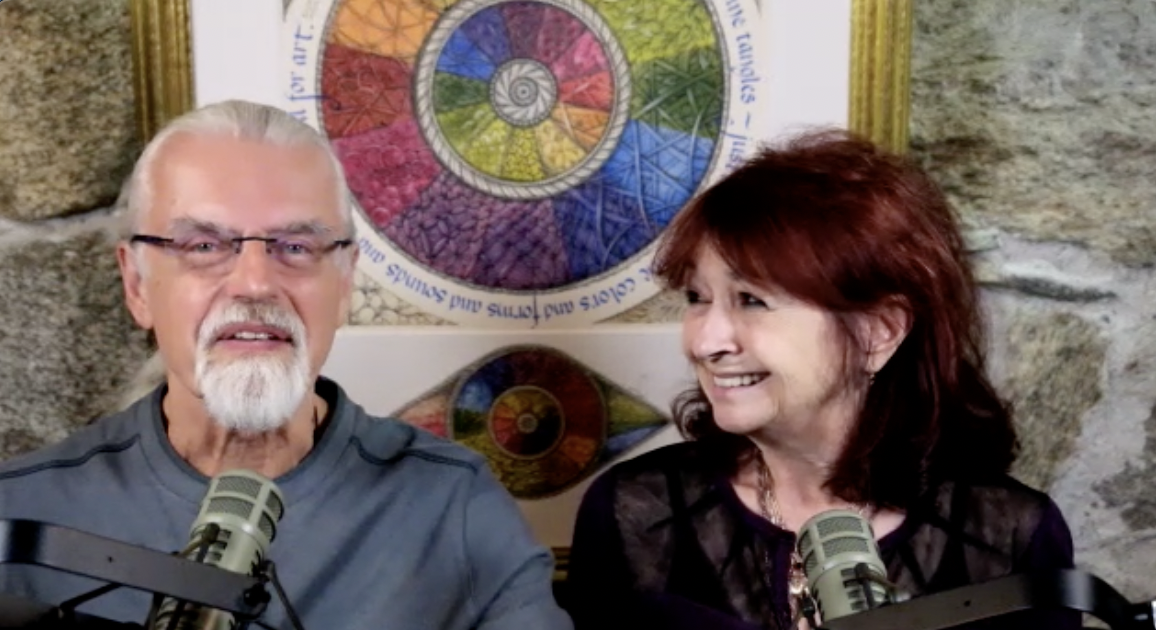Art can be therapeutic for many people, and has long been associated with the potential to improve a person’s mental and emotional well-being. Which may be why Zentangle appears to entice so many people around the world — both young and old alike.
Rick Roberts and artist Maria Thomas, a couple in Massachusetts, came up with the concept nearly two decades ago, offering people an easy and relaxing way to create images from repetitive patterns through a process called The Zentangle Method.
In an interview with Subtle, Roberts said the method helps people to relax, focus, expand their imagination and trust their creativity, while also potentially allowing the artist to experience a sense of healing and fun through creative expression.
“When that creativity flows through, oftentimes it may be the first time a person experiences it, and that can be really transformative to people,” said Roberts.
Creating a safe space
The Zentangle Method is an eight-step process that starts with Gratitude and Appreciation and is followed by Corner Dots, Border, String, Tangle, Shade, Initial and Sign, and Appreciate. The first step involves appreciating the materials and being grateful for the time you have to create the artwork.
Roberts said it was important to use the best woods, tools, papers and pens as an act of respect for the art and for the artist. For example, he said the paper is made in Italy at an old mill that dates several hundreds of years — so taking a moment to appreciate the material being used is important.
The second step, known as Corner Dots, involves putting dots in the four corners of a three-and-a-half inch square so it no longer resembles a blank sheet of paper. The artist connects the dots to create a border, which Roberts said allows them to define the area.
“That’s the sacred space,” he said.
Once the initial work is done, the person draws a random line or group of lines in pencil, which creates the structure on which they will put the patterns that Roberts and Thomas call “tangles”. Each pattern has a name, meant to provide a sense of playful lightheartedness to the process.

Roberts said the method is non-doctrinal and aims to have people put pen to paper and enjoy the process. He also notes that the method creates a safe space within which people can create according to their own inspiration, but with enough structure.
“They’re not worried about what to do next, and all of those combine in a way to create that state of flow and that redefining of their self-image,” said Roberts.
He adds that the “tangles” that people draw have a precise structure that allows them to create a variety of strokes without worrying about the outcome. Once completed, they can add shading to the image and write their initials in a designated spot. The final step of the process involves appreciating the artwork.
Impact on well-being
Both Roberts and Thomas note that studies have been conducted on the effectiveness of the Zentangle Method on well-being. One example comes from a peer-reviewed report by Sandra Hesterman and Gillian McAuliffe, called Introducing Zentangle in the Early Years.
Their project, conducted over a 10-month period in two kindergarten classrooms located at a Western Australian independent community school, looked at the educational benefits of the approach on young children. The children in the study were aged three to five years old.
Two case studies emerged to show that the approach supported “the development of children’s fine motor skills and enriched their language experience through the accommodation of cultural and linguistic diversity.”
Another study looked at the impact of Zentangle on academic stress among high school students in Chennai, India. It found that the method “can reduce stress and provide healthy stress management tactics,” and that it can be used as a tool to “aid students” in an academic environment.
As for adults, a study published in 2022 in the American Journal of Occupational Therapy (Volume 76, Issue 5) considered the effects of the Zentangle Method on the well-being of adults.
The study was funded by the Chinese University of Hong Kong and included 38 participants from a non-clinical population. It found potential in “improving affective well-being” in the general population, and that with more practice the method “can also help improve self-compassion and reduce anxiety.”
Roberts advises that anyone looking to put pencil to paper and draw could take advantage of moments of inspiration and “respect those subtle nudges that come to us.” And then, “be grateful for the opportunity to do something of value.”


